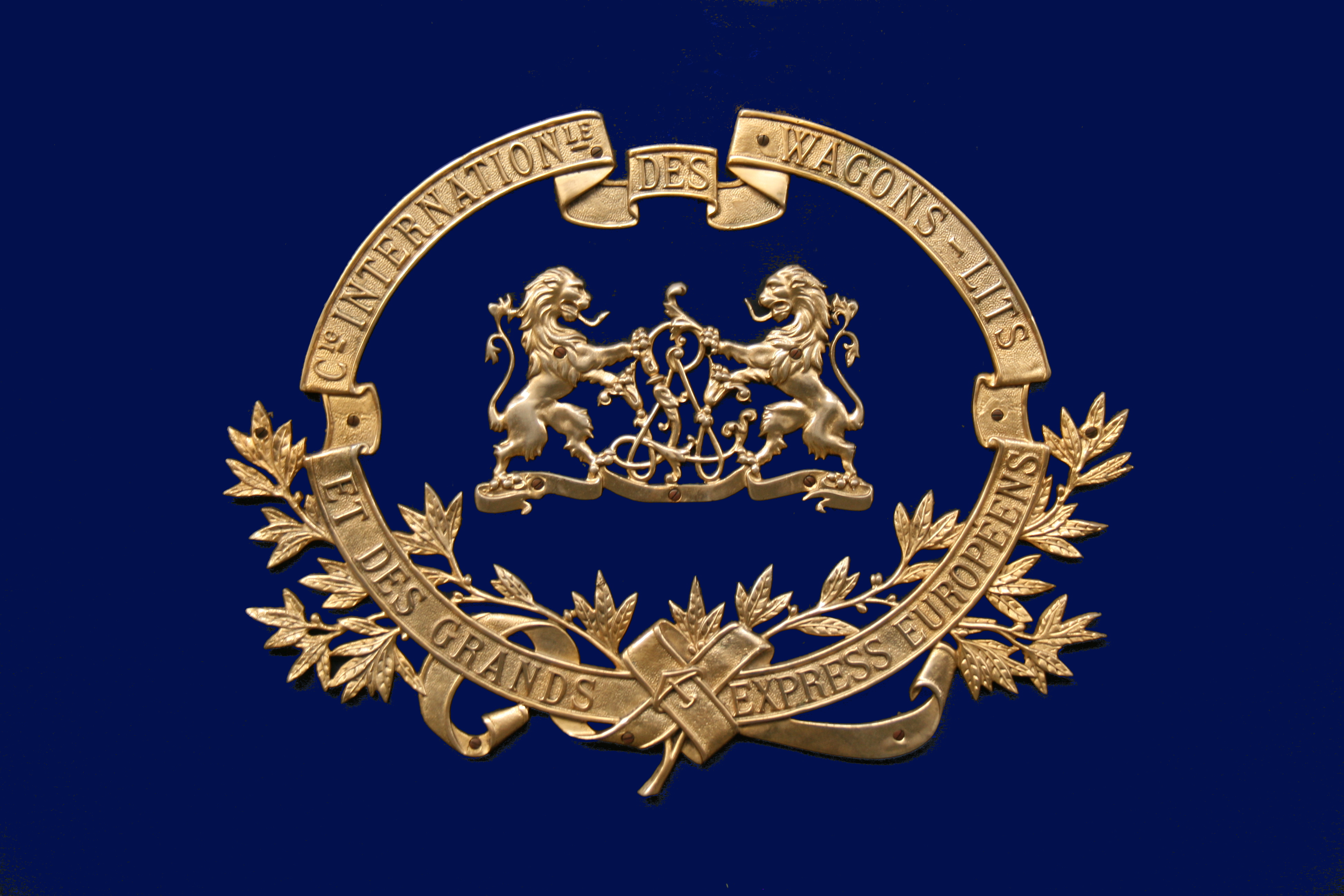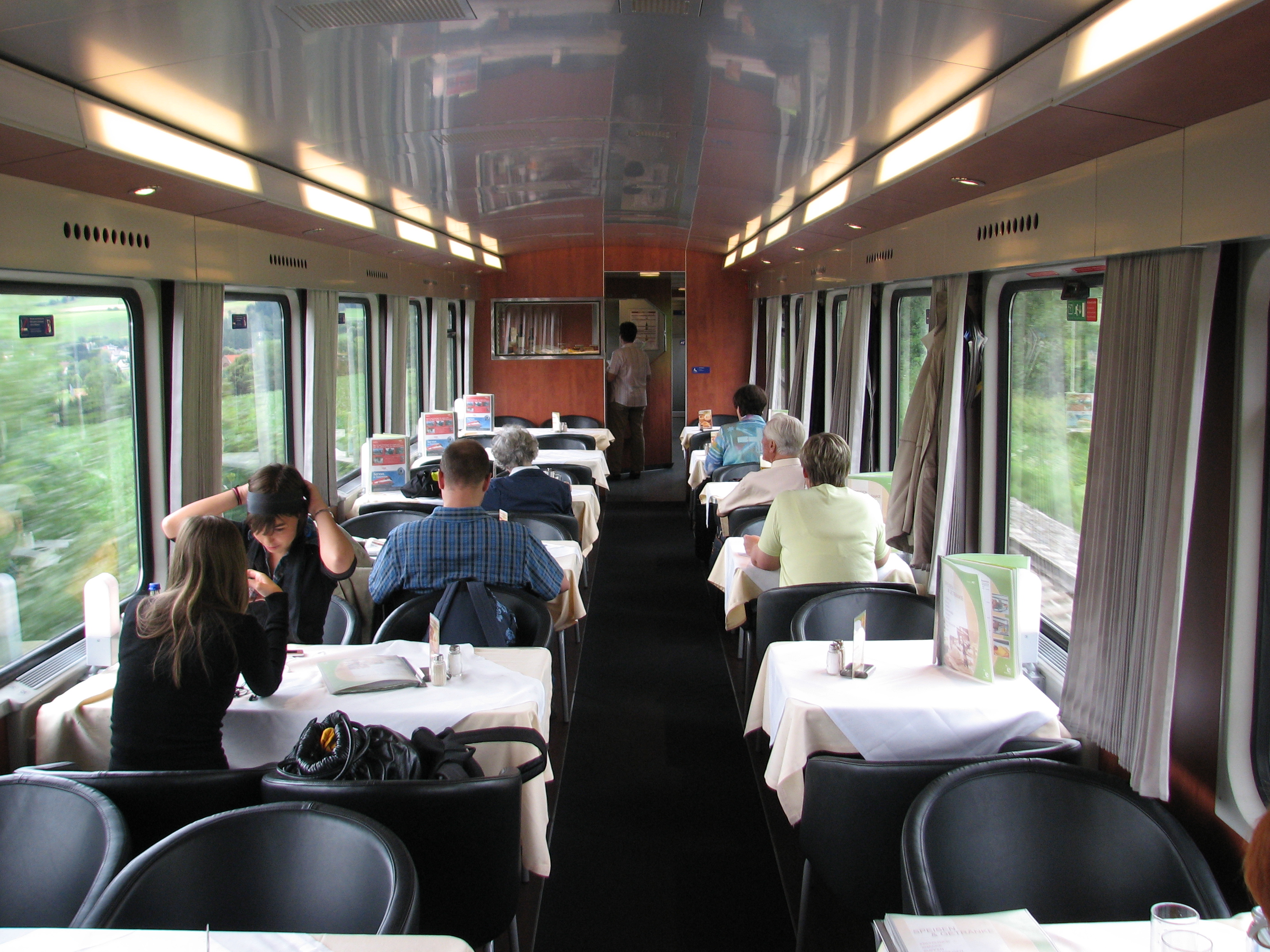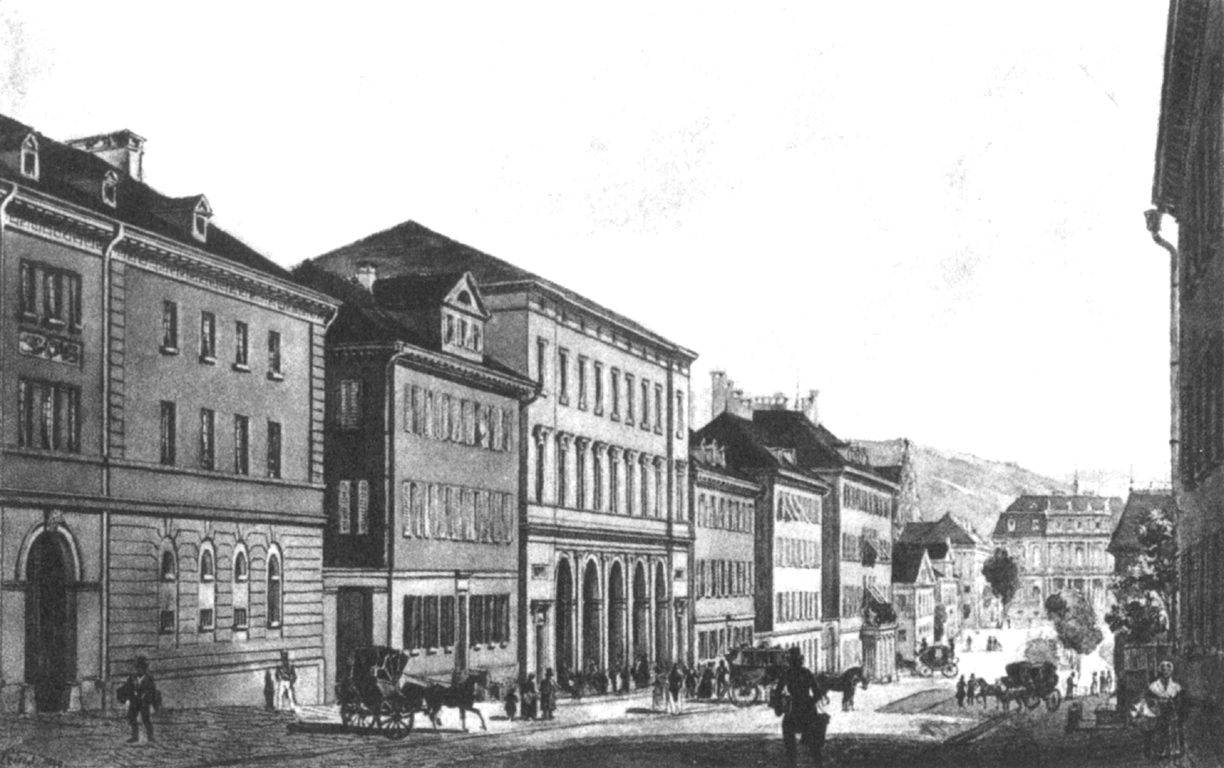|
Kléber (train)
''Kléber'' was an express train that linked Strasbourg and Paris, France, between 1971 and 1988. It was a first-class-only Trans Europ Express (TEE) operated by the ''Société Nationale des Chemins de fer français'' (SNCF). The train was named after Jean Baptiste Kléber, a Strasbourg-born French general during the French Revolutionary Wars. Route The ''Klébers route was the Paris–Strasbourg railway, with just the following stops: * Strasbourg-Ville – Nancy-Ville – Paris-Est History The ''Kléber'' was introduced on 23 May 1971. Initially, it departed from Strasbourg as TEE 60 at 07:50 and arrived in Paris at 11:40. The return train, TEE 61, left Paris at 17:20 and reached Strasbourg at 21:10. Between the Winter 1973/74 timetable and its 1980/81 counterpart, the train ran 15 minutes later in each direction. On 26 September 1982, the morning TEE 60 service was discontinued. Its name was transferred to the evening TEE 62 Strasbourg–Paris service, which had pr ... [...More Info...] [...Related Items...] OR: [Wikipedia] [Google] [Baidu] |
SNCF Class BB 15000
The SNCF class BB 15000 is a class of 25 kV 50 Hz electric locomotives built by Alstom and MTE between 1971 and 1978. Initially 65 locomotives strong, the class was widely deployed on the whole French 25 kV network before being replaced by TGV trains when the LGV Est went into service in 2007. History In the mid-1960s, SNCF sought a new type of dual-current electric locomotives. As thyristor technology advanced rapidly, SNCF decided to adopt the new technology for a new series of locomotives, later known as the '' Nez Cassés'' (Broken Noses, due to their cab styling by Paul Arzens) or BB 4400 kW. Given that the need for pure AC-locomotives was greatest, SNCF placed an initial order of five locomotives in 1968. In 1969 a second order of 10 locomotives followed, in 1970 a third order was made for another 10 locomotives. The remaining 40 locomotives were ordered in 1973. The first five locomotives were delivered in 1971 in the overall-green "Maurienne" livery. The rest ... [...More Info...] [...Related Items...] OR: [Wikipedia] [Google] [Baidu] |
French Revolutionary Wars
The French Revolutionary Wars (french: Guerres de la Révolution française) were a series of sweeping military conflicts lasting from 1792 until 1802 and resulting from the French Revolution. They pitted French First Republic, France against Kingdom of Great Britain, Britain, Habsburg monarchy, Austria, Kingdom of Prussia, Prussia, Russian Empire, Russia, and several other monarchies. They are divided in two periods: the War of the First Coalition (1792–97) and the War of the Second Coalition (1798–1802). Initially confined to Europe, the fighting gradually assumed a global dimension. After a decade of constant warfare and aggressive diplomacy, France had conquered territories in the Italian Peninsula, the Low Countries and the Rhineland in Europe and abandoned Louisiana (New France), Louisiana in North America. French success in these conflicts ensured the spread of revolutionary principles over much of Europe. As early as 1791, the other monarchies of Europe looked with ou ... [...More Info...] [...Related Items...] OR: [Wikipedia] [Google] [Baidu] |
Cité Du Train
The Cité du Train (English: ''City of the Train'' or ''Train City''), situated in Mulhouse, France, is one of the ten largest railway museums in the world. It is the successor to the ''musée français du chemin de fer'' (trans. French national railway museum), the organisation responsible for the conservation of major historical SNCF railway equipment. History In 1961, Mulhouse City Council offered land in Dornach to allow the SNCF to present their historical rolling stock, representative of the company's history. In 1971, the first locomotives were provisionally placed in the old engine shed, Mulhouse-Nord. A second site nearby was opened to the public in 1983 at which stage the museum received 240,000 visitors a year. As attendance declined, it was decided to transfer the collection to the group ''Culture Espaces'', which was already in charge of the Cité de l'automobile (French national automobile museum) since 1999. The French national, regional and departmental governm ... [...More Info...] [...Related Items...] OR: [Wikipedia] [Google] [Baidu] |
List Of Named Passenger Trains Of Europe
This article contains lists of named passenger trains in Europe, listed by country. Listing by country does eliminate some EuroCity services from the list, but they are listed on the relevant EuroCity page for daytime trains and the EuroNight page for nighttime trains. Also separately listed are the named City Night Line services. Austria Belarus Belgium Bulgaria Croatia source Czech Republic Finland France Germany Greece Hungary Status as from December 2022 *:not served by all trains Italy List of named passenger trains of Italy Kazakhstan Netherlands Norway Poland :''Majority of Polish long-distance trains, as well as some regional and local trains, are named. Their names may be connected with station terminus (e.g. "Berolinum" or "Łodzianin"), famous people (e.g. "Reymont" or "Sobieski") or some literary figures (e.g. "Oleńka" or "Wokulski"). Some can be also more abstract, like "Pirat" ("Pira ... [...More Info...] [...Related Items...] OR: [Wikipedia] [Google] [Baidu] |
History Of Rail Transport In France
:''This article is part of the History of rail transport series'' The history of rail transport in France dates from the first French railway in 1823 to present-day enterprises such as the AGV. Beginnings France was a sluggard in building railways, compared to Britain and Belgium, which had already demonstrated their worthiness by 1830. Urban land was expensive, as was iron and coal. A more serious obstacle was powerful political opposition, especially as mobilized by the Transport companies that use canals, roads, and rivers. They blocked the necessary railway charters in Parliament. Already in 1810, the French engineer Pierre Michel Moisson-Desroches proposed to build seven national railways from Paris, in order to travel "short distances within the Empire". However, nothing happened. Mining companies in 1828 opened the first railway to move coal from the fields around St. Etienne 11 miles from St. Etienne to the Loire River. Most of the work was done by horses, although st ... [...More Info...] [...Related Items...] OR: [Wikipedia] [Google] [Baidu] |
Compagnie Internationale Des Wagons-Lits
Newrest Wagons-Lits, formerly (lit. ''International Sleeping-Car Company''), also CIWL, Compagnie des Wagons-Lits, or just Wagons-Lits, is a division of particularly known for its on-train catering and sleeping car services, as well as being the historical operator of the ''Orient Express''. The ''Orient Express'' was a showcase of luxury and comfort at a time when travelling was still rough and dangerous. CIWL soon developed a dense network of luxury trains all over Europe, whose names are still remembered today and associated with the art of luxury travel. Examples of such luxury travel include the ''Blue Train'', the ''Golden Arrow'', the ''North Express'' and many more. CIWL became the first and most important modern multinational dedicated to transport, travel agency, hospitality with activities spreading from Europe to Asia and Africa. Now part of the French Newrest group, Compagnie Internationale des Wagons-Lits (et des grands express européens) (English: ''The Intern ... [...More Info...] [...Related Items...] OR: [Wikipedia] [Google] [Baidu] |
Restaurant Car
A dining car (American English) or a restaurant car (British English), also a diner, is a railroad passenger car that serves meals in the manner of a full-service, sit-down restaurant. It is distinct from other railroad food service cars that do not duplicate the full-service restaurant experience, such as buffet cars, cars in which one purchases food from a walk-up counter to be consumed either within the car or elsewhere in the train. Grill cars, in which customers sit on stools at a counter and purchase and consume food cooked on a grill behind the counter are generally considered to be an "intermediate" type of dining car. History United States Before dining cars in passenger trains were common in the United States, a rail passenger's option for meal service in transit was to patronize one of the roadhouses often located near the railroad's " water stops". Fare typically consisted of rancid meat, cold beans, and old coffee. Such poor conditions discouraged many from makin ... [...More Info...] [...Related Items...] OR: [Wikipedia] [Google] [Baidu] |
Le Mistral (train)
''Le Mistral'', or the ''Mistral'', was an express train between Paris and Nice in France. Introduced in 1950, it was operated by the ''Société Nationale des Chemins de fer français'' ("French National Railway Corporation") ( SNCF), and was regarded as the company's flagship train. The train was named after the Mistral, a strong, cold and usually dry regional wind blowing from north or northwestern France to the coast of the Mediterranean around the Camargue region. History The ''Mistral'' began its existence in 1950 as a mostly steam locomotive-hauled ''Rapide'' (express train) between Paris-Gare de Lyon and Marseille-Saint-Charles. Two years later, in 1952, its route was extended to Nice-Ville. By 1965, when it was integrated into the Trans Europ Express (TEE) system, it had become completely electric locomotive-hauled. In the 1970s, ''Le Mistral'' included some unique amenities, among them a "bookstall, bar and hairdressing salon". Nock, O.S. (1978). ''World Atlas of ... [...More Info...] [...Related Items...] OR: [Wikipedia] [Google] [Baidu] |
Stuttgart
Stuttgart (; Swabian: ; ) is the capital and largest city of the German state of Baden-Württemberg. It is located on the Neckar river in a fertile valley known as the ''Stuttgarter Kessel'' (Stuttgart Cauldron) and lies an hour from the Swabian Jura and the Black Forest. Stuttgart has a population of 635,911, making it the sixth largest city in Germany. 2.8 million people live in the city's administrative region and 5.3 million people in its metropolitan area, making it the fourth largest metropolitan area in Germany. The city and metropolitan area are consistently ranked among the top 20 European metropolitan areas by GDP; Mercer listed Stuttgart as 21st on its 2015 list of cities by quality of living; innovation agency 2thinknow ranked the city 24th globally out of 442 cities in its Innovation Cities Index; and the Globalization and World Cities Research Network ranked the city as a Beta-status global city in their 2020 survey. Stuttgart was one of the host cities ... [...More Info...] [...Related Items...] OR: [Wikipedia] [Google] [Baidu] |
Stuttgart Hauptbahnhof
Stuttgart Hauptbahnhof (; en, Stuttgart central station) is the primary railway station in the city of Stuttgart, the state capital of Baden-Württemberg, in southwestern Germany. It is the largest regional and long-distance railway station in Stuttgart, the main node of the Stuttgart S-Bahn network, and, together with the station at Charlottenplatz, it is the main node of the Stuttgart Stadtbahn. Located at the northeastern end of the ''Königstraße'', the main pedestrian zone of the city centre, the main line station is a terminus, whilst the subterranean S-Bahn and Stadtbahn stations are through-stations. The station is well known for its 12-storey tower with a large, rotating and illuminated Mercedes-Benz star insignia on top; the tower and station building are city landmarks. Plans for the controversial Stuttgart 21 project to convert the main line terminus station into an underground through station include the demolition of the side wings of the building, together with ... [...More Info...] [...Related Items...] OR: [Wikipedia] [Google] [Baidu] |
Stanislas (train)
''Stanislas'' was an express train that linked Paris and Strasbourg in France. Introduced in 1971, it was operated by the ''Société Nationale des Chemins de fer français'' (SNCF). The train was named after Stanisław I Leszczyński (French: ''Stanislas Leszczynski''), King of Poland, Duke of Lorraine and a count of the Holy Roman Empire. It was a first-class-only Trans Europ Express (TEE) until 1982, and then a two-class '' Rapide'' until its discontinuance in about 1988. Route The ''Stanislass route was the long Paris–Strasbourg railway, with just the following stops: * Paris-Est – Nancy-Ville – Strasbourg-Ville History The ''Stanislas'' was introduced on 26 September 1971, to complement an existing TEE service, the '' Kléber'', which, since 23 May 1971, had run from Strasbourg to Paris in the morning and had returned to Strasbourg in the evening. Initially, the ''Stanislas'' departed from Paris as TEE 63 at 11:05 (later 11:00) and arrived in Strasbourg at 14:5 ... [...More Info...] [...Related Items...] OR: [Wikipedia] [Google] [Baidu] |
Gare De Nancy-Ville
Nancy-Ville station (French: ''Gare de Nancy-Ville'') is the main railway station serving the city Nancy, Meurthe-et-Moselle department, northeastern France. It is situated on the Paris–Strasbourg railway. Services The station is served by high speed trains to Paris and Strasbourg, and by regional trains towards Paris, Épinal, Metz, Strasbourg and Dijon. Fiches horaires.Le réseau TER Fluo TER Grand Est, accessed 29 April 2022. A shuttle bus service serves the connection between |





